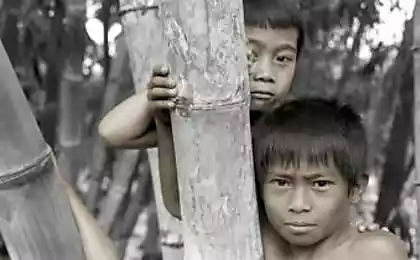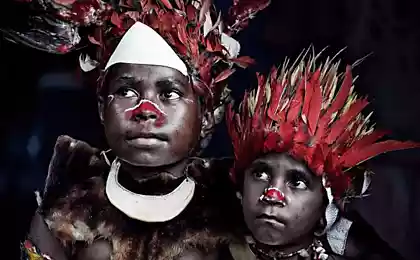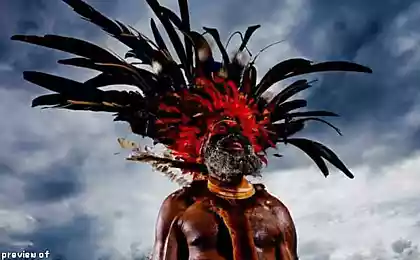1585
Himba Tribe
Himba - the people (20 000 - 50 000 persons) living in northern Namibia, in the Kunene.
Economic classes. Himba raising cattle, goats and sheep. Women are responsible for milking cows. Also, women take care of children (one woman can take care of the children the other). In addition, women often perform more hard work than men carry water to the village and building homes.

Residence. Home of the Himba are cone-shaped and constructed from young trees, which are then covered with mud and manure.
Beliefs. Himba have maintained their traditional beliefs, including ancestor worship and rituals associated with the sacred fire (okoruvo), which are considered an important link between the living world and the other world. The sacred fire is maintained until the head of the tribe alive. When he dies, his house was destroyed, and the fire extinguish. His family all night committing ritual dances. Before the funeral of the leader all say to him: «Karepo nawa», which can be translated as "no pain".
Clothing. For the Himba hairstyle, clothes and decorations are of great importance in their traditional culture. Even newborn babies are decorated with a pearl necklace, and older children are bracelets made of copper, decorated with seashells. Himba women wear skirts made of goat leather, decorated with shells and jewelry made of copper. Both men and women cover their bodies with a mixture of ocher, fat and ash to protect your skin from the sun. Quite often in this paste (otjize) added aromatic resin bush omuzumba (Klaus G. Forg 2004: 145). This mixture gives their skins a reddish tinge, which symbolizes the blood, which in turn symbolizes life. Women braid each other braids and also cover them with the mixture. By hairstyle woman can determine her marital status. Hairstyles men reflect their marital status. For example, married men wear turbans. Modern clothes in the Himba is virtually absent, but if it appears that it is obtained by men.

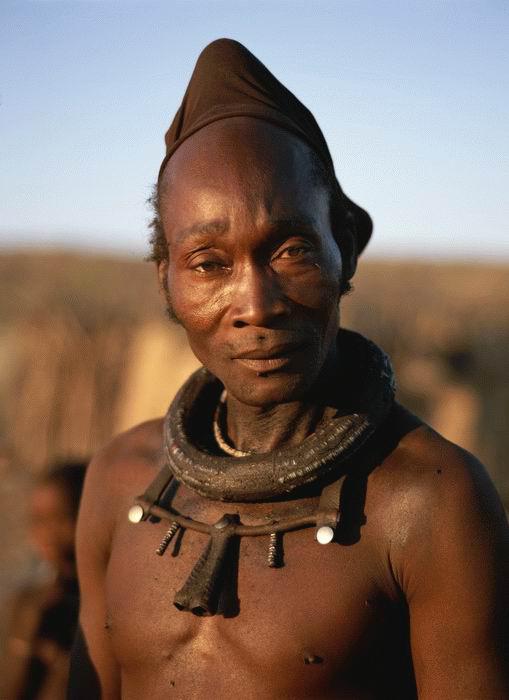



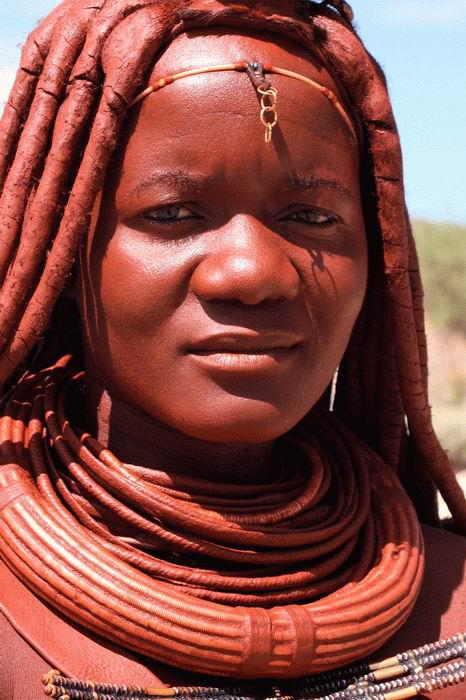

Economic classes. Himba raising cattle, goats and sheep. Women are responsible for milking cows. Also, women take care of children (one woman can take care of the children the other). In addition, women often perform more hard work than men carry water to the village and building homes.

Residence. Home of the Himba are cone-shaped and constructed from young trees, which are then covered with mud and manure.
Beliefs. Himba have maintained their traditional beliefs, including ancestor worship and rituals associated with the sacred fire (okoruvo), which are considered an important link between the living world and the other world. The sacred fire is maintained until the head of the tribe alive. When he dies, his house was destroyed, and the fire extinguish. His family all night committing ritual dances. Before the funeral of the leader all say to him: «Karepo nawa», which can be translated as "no pain".
Clothing. For the Himba hairstyle, clothes and decorations are of great importance in their traditional culture. Even newborn babies are decorated with a pearl necklace, and older children are bracelets made of copper, decorated with seashells. Himba women wear skirts made of goat leather, decorated with shells and jewelry made of copper. Both men and women cover their bodies with a mixture of ocher, fat and ash to protect your skin from the sun. Quite often in this paste (otjize) added aromatic resin bush omuzumba (Klaus G. Forg 2004: 145). This mixture gives their skins a reddish tinge, which symbolizes the blood, which in turn symbolizes life. Women braid each other braids and also cover them with the mixture. By hairstyle woman can determine her marital status. Hairstyles men reflect their marital status. For example, married men wear turbans. Modern clothes in the Himba is virtually absent, but if it appears that it is obtained by men.











